Mold in the Bathroom and Shower – Bathroom Mold Removal
Mold at Your Home or Business? We Can Help!

No matter what bathroom mold damage situation you’re dealing with, we have solutions.
Mold growth is a common occurrence in the bathroom and shower because the moisture level creates the perfect environment for mold to form. It is important to address mold in your bathroom immediately before it causes significant damage or affects your health.
If you find mold in your bathroom or shower, make sure you take the following steps:
- Step 1: Identify the source of the moisture that is causing the mold growth and fix the issue.
- Step 2: Protect yourself by wearing gloves, safety eyewear, long sleeves and pants, and a mask when in areas affected by mold.
- Step 3: Clean and remove the mold from non-porous surfaces using a mixture of one cup of bleach to one gallon of water. Apply the mixture and scrub the mold with a stiff-bristled brush.
- Step 4: Help prevent mold from coming back by improving the ventilation in your bathroom and fixing any issues that could lead to mold such as leaking pipes and fixtures.
Call a Professional for Bath and Shower Mold Remediation
Mold in your bathroom can cause significant damage and put your health at risk from exposure. If you find mold in your bathroom, make sure to call a mold remediation professional right away. You can reach us at (888) 915-7197 for a mold remediation specialist in your area.
Mold in the Bathroom and Shower – Who to Call?
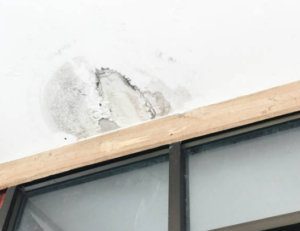
If you find significant mold growth in your bathroom, call RestorationMaster at (888) 915-7197 to get in touch with a mold remediation professional in your area.
Shower and Bathroom Mold Removal – What to Expect?
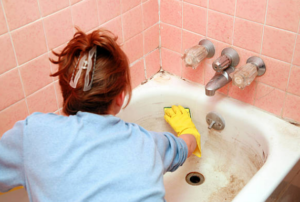
If the mold growth is only in your bathroom, mold remediation technicians will contain it within your bathroom and determine the best method to remove the mold and restore the damage.
Choosing the Right Mold Removal Service for Your Bathroom – Why RestorationMaster?
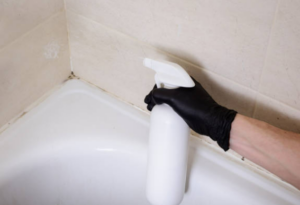
RestorationMaster has spent more than a decade working with the top mold remediation providers in the U.S. and we can put you in touch with a trusted professional in your area.
Residential Bathroom Mold Removal
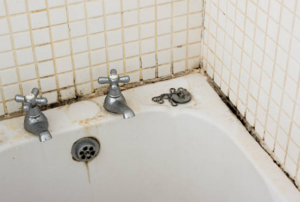
Mold in your bathroom can cause damage within your home and put your health at risk. Mold remediation professionals can effectively remove bathroom mold from your home.
Commercial Bathroom Mold Removal

Moldy public bathrooms put people at risk of health effects and can reflect poorly on a business. RestorationMaster professionals provide commercial bathroom mold removal to remove mold growth from commercial buildings.
Emergency Bathroom Mold Removal Service
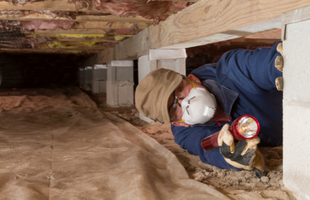
You can call us any time at (888) 915-7197 to get in touch with a mold remediation professional in your area right away.
Contact a local mold remediation contractor in your area:
Bathroom Mold Removal FAQs
Mold in the bathroom occurs when excess moisture accumulates, allowing for the ideal conditions for mold growth. Mold may appear as a result of a leaking sink or toilet, pipe leaks, overflows, or condensation. Mold may appear on tiled floors and walls as well as on bathmats, ceilings, and drywall in the bathroom. It is also common to find mold in the shower if the excess moisture is not removed after each shower.
Any type of mold that can appear in your home is likely to appear in the bathroom under the right conditions. You may also encounter mildew on wet surfaces and fixtures which will turn into a mold colony if it is not cleaned up. The following are the types of mold you may find in your bathroom:
• Black mold in shower
• Pink mold in shower
• Red mold in shower
• Orange mold in shower
• Pink mold in bathroom
• Red mold in bathroom
In most cases, the mold that appears in the bathroom is visible mold growth that can be seen on fixtures and surfaces. However, mold can be hidden in areas of the bathroom such as under sinks, within bathroom fans, and behind walls and ceilings.
The following are the main signs of mold in the bathroom:
• Mold in bathtub
• Mold on shower curtains
• Dangerous black mold in toilet
• Mold in shower grout lines
• Dark patches, bubbling, or drooping on drywall surfaces
• Musty odors under the sink
If you notice mold in your bathroom, you need to call a professional right away. Mold thrives in moist areas which means the mold growth in the bathroom will quickly get worse. Call RMF at (888) 915-7197 to find a mold remediation professional near you.
The root cause of mold in the bathroom is excess moisture, but there are many ways that moisture can become a problem and increase the risk of mold growth. The following are the main causes of mold in the bathroom:
• Lack of proper ventilation
• Wet spots on vulnerable materials like bathmats, towels, and drywall
• Plumbing leaks
• Chronic moisture and steam from showers
• Splashing water
• Overflows
Bathroom mold requires immediate attention because excess moisture in the bathroom will only cause it to spread and get worse. You can get in touch with a mold removal professional in your area by calling (888) 915-7197.
Bathroom mold removal is the complete removal of mold from the bathroom, no matter where it appeared. Mold remediation professionals will isolate the mold in your bathroom to protect other areas of your property and determine the cause of the mold. The mold growth can be cleaned from non-porous surfaces like tile and plumbing fixtures, but affected drywall may need to be removed and replaced.
Bathroom mold removal includes the following steps:
• Mold remediation
• Mold removal
• Mold inspection
• Mold treatment
• Mold cleanup
• Mold abatement
The best way to limit the spread of mold and the damage it causes is to call a mold remediation professional right away. At RMF, we can put you in touch with a mold remediation specialist in your area when you call (888) 915-7197.
However, if there is a plumbing leak in the bathroom that has caused mold damage behind walls and ceilings, then cabinets, drywall, and fixtures may need to be removed to get to the mold. This could end up costing thousands depending on the extent of the damage.
Black mold is common in the shower because these areas are wet and warm. Fortunately, mold can be removed from the shower rather easily because surfaces in most showers are non-porous. The following are the steps to remove black mold from your shower:
• Use an antifungal surface cleaner on the mold growth and wipe it off with a sponge or cloth. Then use a scrub brush on stubborn stains and rinse the area with water. These cleaners should only be used on non-porous surfaces.
• Remove black mold stains from grout line using a mixture of equal parts water and bleach. Put the mixture in spray bottle and spray it on the stained area. Let it sit for a few minutes and use a brush to scrub the stains. An old toothbrush works great for scrubbing grout lines.
• After removing the mold and the stains, spray vinegar over the affected areas and let it dry to kill the mold spores.
Tile surfaces are non-porous, but grout lines between the tile are not, especially if the protective finish has worn out from your tile and grout surfaces. Mold in the grout lines is unsightly as the discolored lines will stand out against the clean tile. You can use one of the following methods to remove mold from grout lines in the shower:
• Bleach solution: Form a mixture that is one part bleach to four parts water and put it in a spray bottle. Spray the affected grout lines and let the solution sit for 30 minutes. Use a toothbrush to scrub the mold from the grout lines and then rinse the area with warm water. Repeat the process as many times as needed. This bleach solution not only helps remove mold from grout lines, but also soap residue.
• Baking Soda: There are a couple of different ways you can use baking soda to remove mold from grout lines. The first way is to mix ½ cup of baking soda with a gallon of water and spray it on the moldy grout. Another method is to create a paste with ½ cup of baking soda and a few teaspoons of water and scrub it into the grout lines using a toothbrush. Let it sit for ten minutes and then rinse thoroughly.
Black mold may appear within the toilet bowl or the toilet tank. No matter where it appears, it is important to remove it as quickly as possible. The following steps will help you remove black mold from your toilet.
Removing mold from the toilet bowl:
• Flush the toilet to remove excess water.
• Sprinkle baking soda into the toilet bowl and tank.
• Pour distilled vinegar into the toilet bowl and let it sit for a few minutes.
• Use a brush to scrub the mold from the toilet bowl.
• Repeat the previous steps as many times as necessary to remove all mold.
• Flush the toilet when done to remove the vinegar and baking soda.
Removing mold from the toilet tank:
• Put a cup of bleach into the full toilet tank and let it sit for 20-30 minutes.
• Use a toilet brush to scrub the tank and remove the mold. Be careful not to damage any of the parts in the tank.
• Flush the toilet several times to remove the mold and bleach.
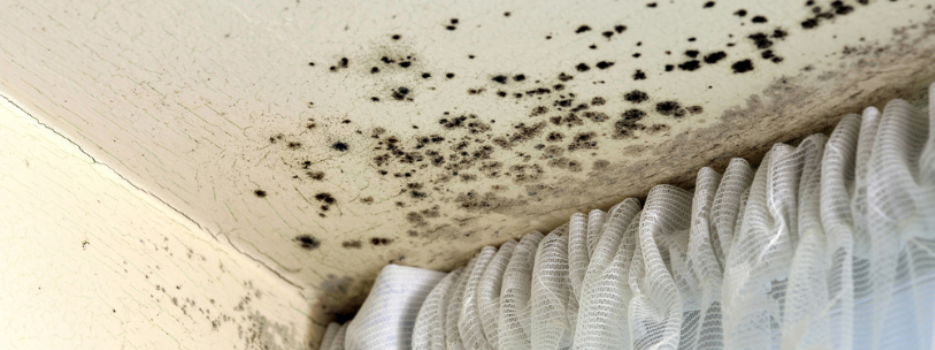
Related Posts
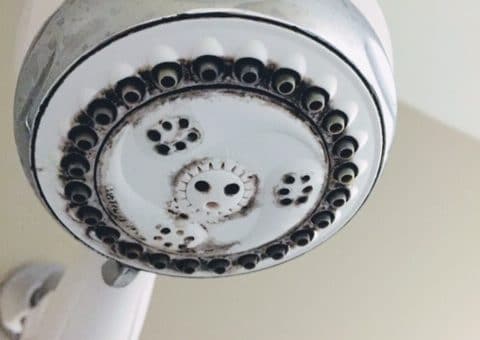
How to Remove Bathroom Mold
Mold grows best in warm and humid rooms. Therefore, to help prevent mold growth in your bathroom and shower, keep it well-ventilated. Check out some suggestions to keeping the tub/shower clear of mold and several popular mold cleaning methods.
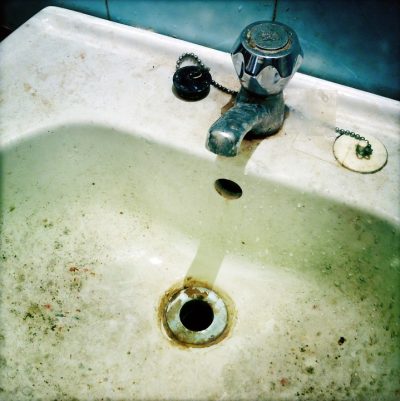
How to Prevent Mold in the Bathroom
No matter how much you clean, it can seem almost impossible to prevent mold in the bathroom. But there are steps you can take to deter it from growing, simply just by removing the moisture. Here are some tips on how to prevent mold in the bathroom.

How to Detect Mold in Your Bathroom
Mold develops rapidly and threatens not only to cause structural damages but to pose health risks, too. When checking for mold in the bathroom, you need to know what you are looking for in order to detect it before it’s too late. Follow these tips.
